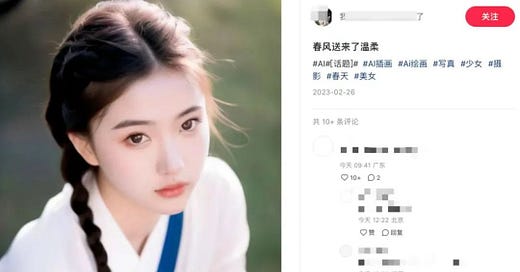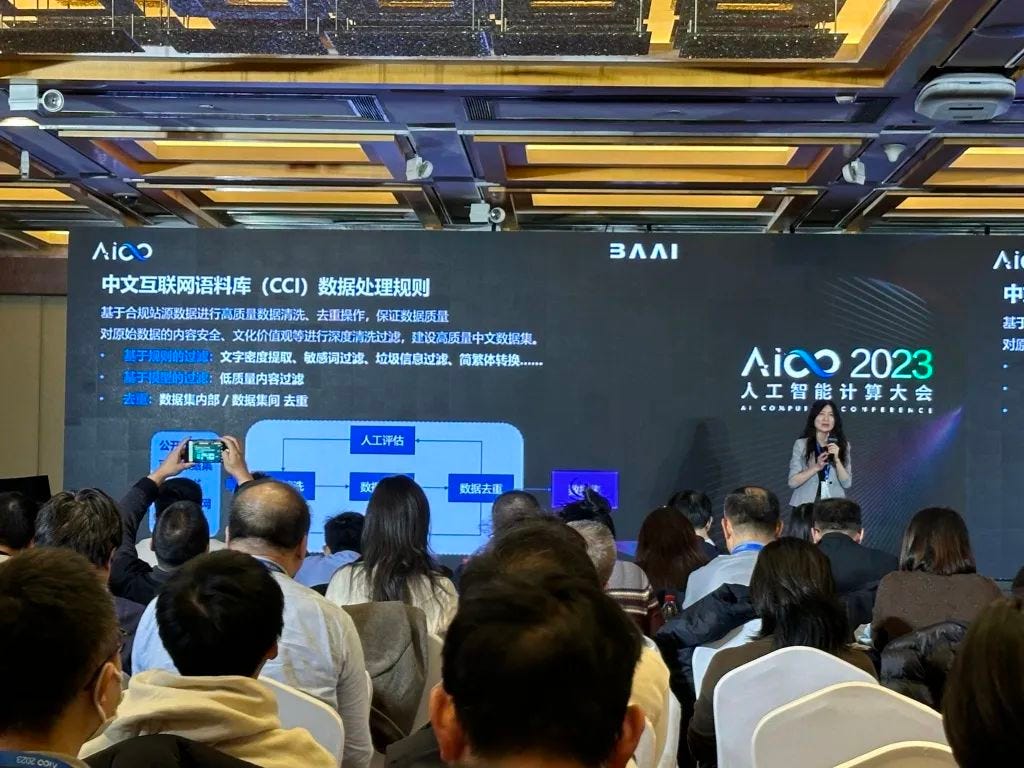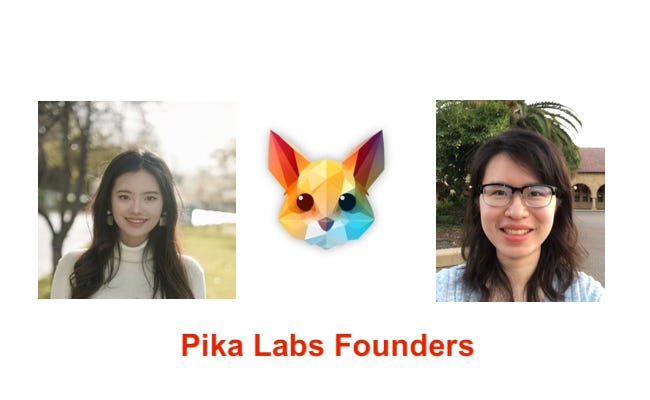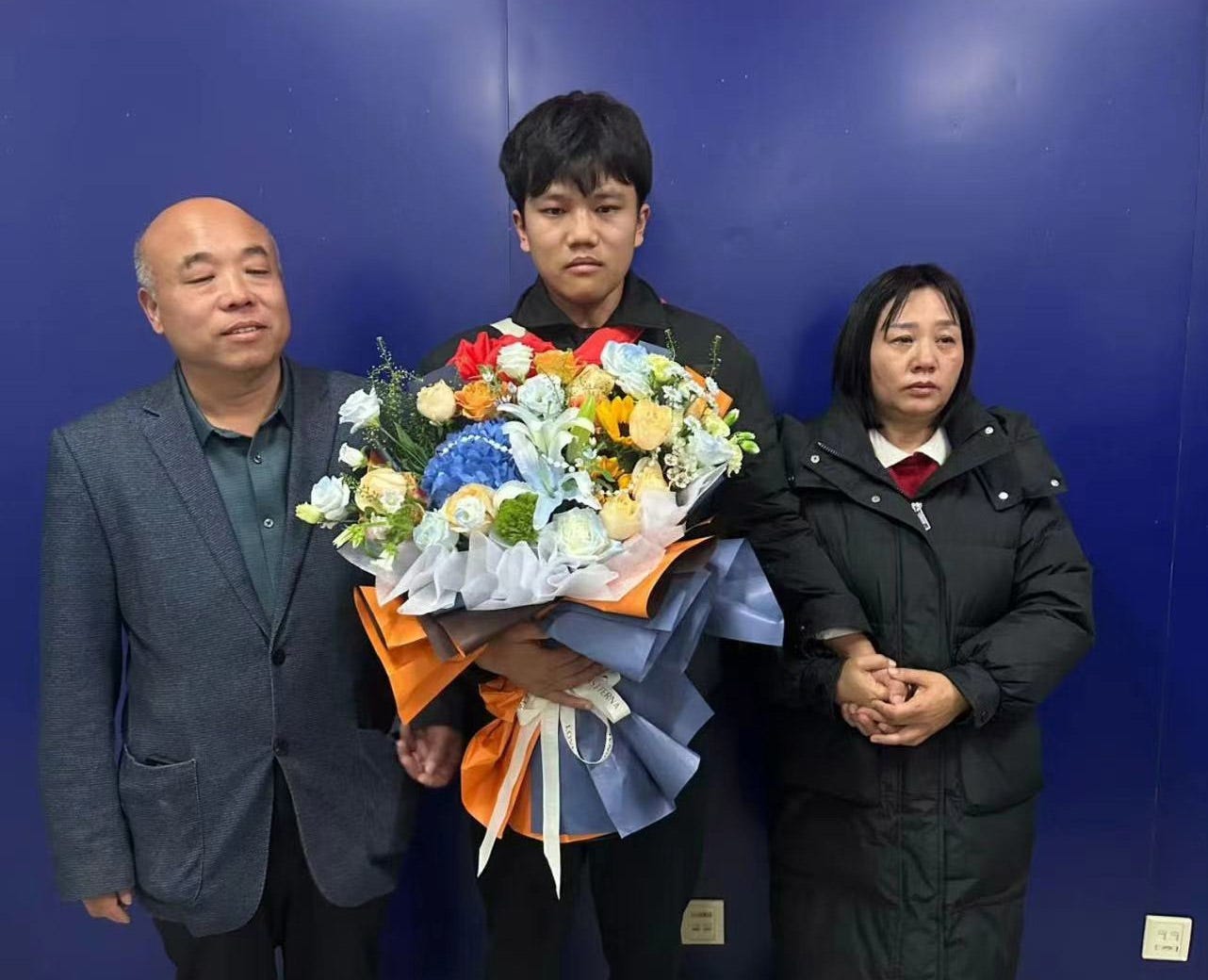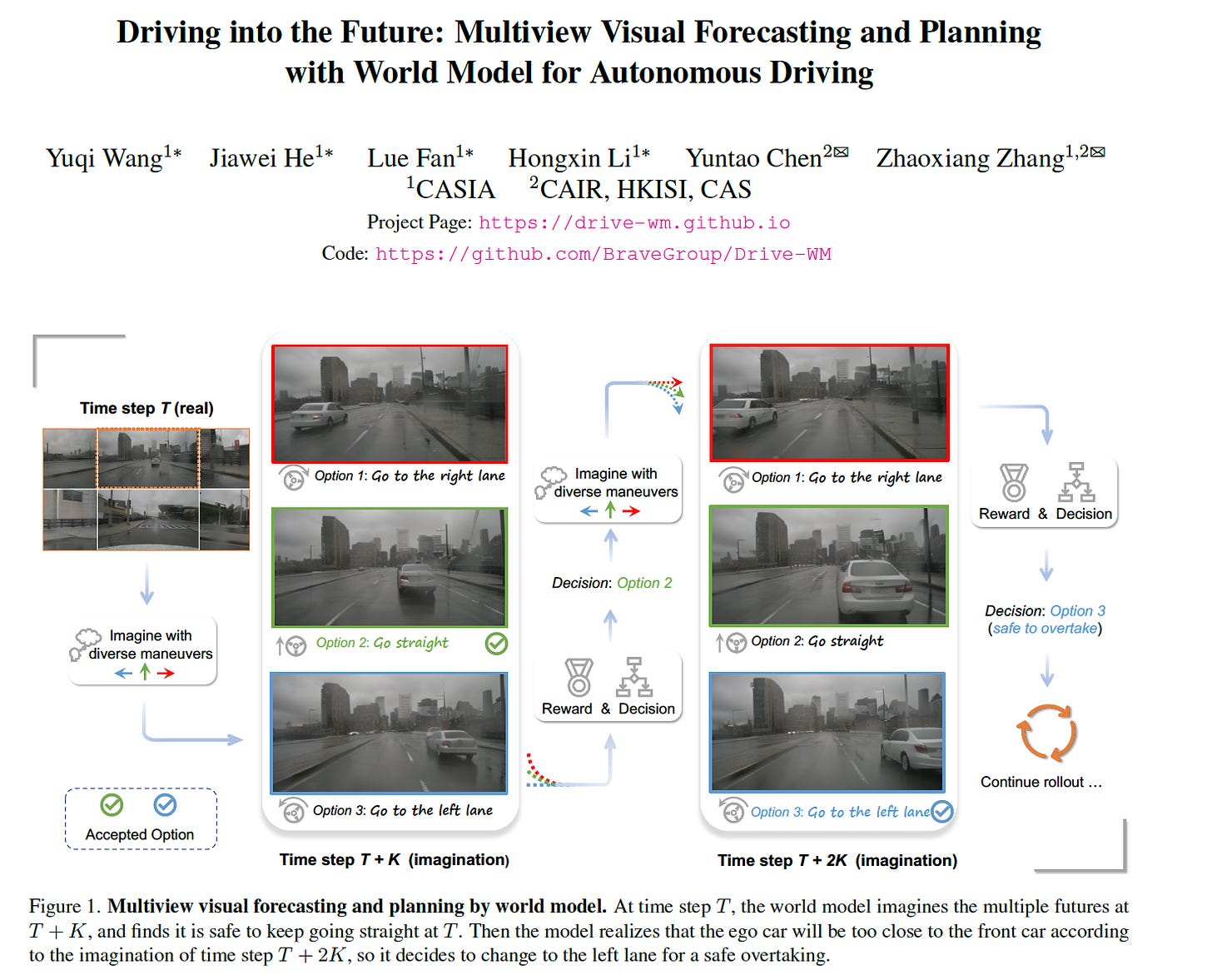👩🏻💻China's 1st AI Art Copyright Lawsuit, Tech Giants' Global AI Expansion, and the AI Startup Founder Becoming Chinese Parents' New Idol
Weekly China AI News from November 27 to December 3
Hello readers, in this issue, I will discuss the Chinese court’s decision on their very first AI art copyright case. ByteDance and other tech biggies from China are taking their AI products global. BAAI has just rolled out an open-source Chinese dataset, all under Beijing’s CAC guidance. Plus, a Stanford dropout of Chinese descent, who has started a company in Silicon Valley, is making big waves back in the Chinese tech scene. READ BELOW for all the juicy news!
Chinese Court Upholds Human Ownership of AI Art Copyright
What’s New: In the first such lawsuit of its kind in China, the Beijing Internet Court ruled last week that AI-generated images are protected under copyright law. The copyright for AI-generated images belongs to the individual who used an AI model to create the image, the court asserted.
How it Happens: This February, Li, the plaintiff, used the open-source software Stable Diffusion to create an image. He then posted it on social media.
The defendant, Liu, later used this image in her own online publication without permission and removed Mr. Li’s watermark. Li then sued Liu for copyright infringement, seeking economic compensation and a public apology.
On May 25, the case was filed in the Beijing Internet Court. On August 24, the court publicly heard the case, with the plaintiff and defendant participating online via an electronic litigation platform. Last week, the court ruled that Liu infringed Li's rights to attribution and information network dissemination. Liu was ordered to issue a public apology on social media and pay Li 500 yuan.
Why It Matters: This case is widely regarded as setting a precedent in China for the copyright of AI-generated images. The judge recognized human involvement in AI-generated content: The plaintiff devised a prompt, adjusted parameter, and, based on the initial images generated, further modified prompt words and parameters to select a final image.
This year has seen an increasing focus on legal battles over the copyright and IP rights of AI-generated images. In another notable case in the U.S., a federal judge rejected an attempt to copyright an artwork generated by AI alone. However, this decision does not mean that artworks created with AI assistance are ineligible for copyright registration.
ByteDance Launches ChitChop Amid Rise of Chinese LLM Products in the Global Market
What’s New: Last week, ByteDance launched ChitChop, an AI personal assistant app that integrates AI creation, painting, entertainment, learning, work, and lifestyle, reflecting a growing trend of Chinese companies launching LLM products globally.
ChitChop is now available on both the Google Play Store and Apple App Store, with a web version also accessible.
How It Works: A lookalike of ByteDance’s Xiao Wukong (小悟空), ChitChop offers a variety of features, from generating and polishing articles to providing learning tools like essay improvement and language practice. The AI art feature can generate pictures in multiple styles like anime, cyberpunk, and more. The app’s productivity module can help users write code, optimize resumes, and conduct market research. In terms of lifestyle, ChitChop provides emotional support, storytelling, and fitness advice.
ChitChop is developed and operated by POLIGON, which also manages ByteDance’s other overseas social products like Helo and FizzoToon.
Why It Matters: This rise in overseas LLM product launches by Chinese companies is part of a larger trend. Huawei Cloud previously announced an overseas deployment plan for LLMs. Alibaba earlier launched AI tools for cross-border e-commerce. Baidu also launched an AI social product Synclub overseas. Not to mention AI startups based in China or founded by Chinese entrepreneurs.
Chinese Internet Corpus Unveiled at AICC 2023
What’s New: At the AICC 2023 AI Computing Conference last week, the Beijing Academy of Artificial Intelligence (BAAI) unveiled the Chinese Internet Corpus (CCI), a high-quality, trustworthy dataset sourced from internet sites within mainland China. The dataset was built in collaboration with Torethink and Zhongke Wenge. You can find the dataset here.
How It Works: The first release of CCI (v1.0.0) is a 104GB dataset, ranging from January 2001 to November 2023. It amassed BAAI’s 400GB “Wudao” dataset, 250GB from Torethink, and 200GB from Zhongke Wenge. The BAAI has cleaned, de-duplicated, and filtered the data, mainly sourced from municipal government portals, key news websites, and central and local newspapers.
Why It Matters: The involvement of Beijing’s Cyberspace Administration of China (CAC) and the Haidian government in the CCI project suggests that it could become a highly reliable and safe source for training LLMs. This also indicates a shift towards greater government involvement in the development of open-source Chinese language datasets, a domain traditionally dominated by private companies and research institutions.
Pika Labs Secures $55M: Stanford Dropout CEO Becomes China's AI Sensation
What’s New: Demi Guo, an American-born Chinese entrepreneur and Stanford dropout, is making waves in China’s tech community. She co-founded a Silicon Valley-based AI startup named Pika Labs, which recently announced $55 million in funding. Besides, she was also revealed to be the daughter of former Sunyard Technology chairman Guo Huaqiang.
Following Pika Labs’ funding news, Sunyard Technology’s stock surged by 10% on the Chinese market on November 30, 2023. The company has issued a statement clarifying that its connection with Pika Labs is limited to the family link.
Buzz About Pika Labs: Pika Labs is rapidly gaining recognition as a strong competitor to Runway in AI video software. Their flagship product, Pika 1.0, can transform Elon Musk into an anime character or change a model’s outfit with just a text command.
Why Guo’s Popular: Guo embodies a blend of eye-catching attributes that have caught public attention. She’s a young, talented entrepreneur of Chinese descent, a chairman’s daughter with a Harvard background, and most notably, a Stanford dropout who launched a high-profile AI startup. Her journey, marked by elite education and rapid startup success, has become a popular story (and a role model) among Chinese parents.
Weekly News Roundup
👨👩👦 In a heartwarming reunion, Xie Qingshuai, abducted as an infant in 1999, has been reunited with his birth family in Hebei province, thanks to cutting-edge AI facial recognition technology. (Read more at Sixth Tone)
🚀 Alibaba Cloud open-sourced its LLM Qwen-72B with 72 billion parameters, setting new records in 10 benchmarks. The release also includes the Qwen-1.8B model and Qwen-Audio for audio processing.
🌍 Inspur Information released its open-source LLM, Yuan2.0, with variants of 102.6 billion, 51.8 billion, and 2.1 billion parameters.
📉 U.S. short-seller Grizzly Research issued a report accusing AI giant SenseTime of inflating revenue, leading to a drop of over 9% in SenseTime’s stock price.
🌐 ByteDance reportedly established a new AI department, “Flow”, with a focus on to-C applications.
🤖 BAAI open-sourced its 70-billion-parameter LLM Aquila2-70B-Expr, the first model trained on a hybrid compute of NVIDIA’s A100 and A800 clusters, as well as Tianyun Zhiyun’s BI-V100 and BI-V150 clusters.
🌐 Huawei Cloud has launched the industry’s first hybrid cloud for LLMs.
🤖 Meizu announced its LLM, Aicy AI, described as an on-demand encyclopedia.
Trending Research
This paper presents a novel framework for character animation using diffusion models, addressing challenges in image-to-video conversion. It introduces ReferenceNet for maintaining detailed character consistency and an efficient pose guider for controllability, achieving superior results in benchmarks. Read the paper Animate Anyone: Consistent and Controllable Image-to-Video Synthesis for Character Animation.
MagicAnimate, a diffusion-based framework, enhances temporal consistency and animation fidelity in human image animation. It uses a video diffusion model and a novel appearance encoder, outperforming baselines significantly, especially in TikTok dance videos. Read the paper MagicAnimate: Temporally Consistent Human Image Animation using Diffusion Model.
Drive-WM, a novel driving world model, enhances autonomous driving by predicting future events and assessing risks. It uses spatial-temporal modeling to generate multiview videos, aiding in safe driving planning by evaluating optimal trajectories based on image-based rewards. Its effectiveness is proven on real-world driving datasets. Read the paper Driving into the Future: Multiview Visual Forecasting and Planning with World Model for Autonomous Driving.

